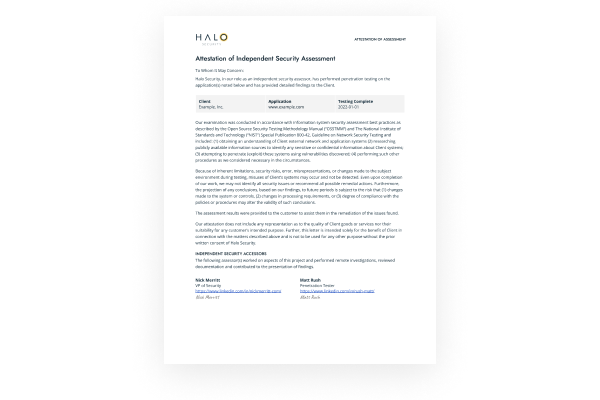Internal Network Penetration Testing
Discover What Attackers Can Access Inside Your Network
Professional internal network security testing by certified ethical hackers using assumed breach scenarios.
Internal networks often contain your organization's most sensitive assets and data, yet many organizations focus primarily on perimeter security. Our manual penetration testing simulates what happens when an attacker gains initial access to your internal network through an assumed breach scenario, identifying lateral movement opportunities, privilege escalation paths, and access to critical systems. While automated tools can find individual vulnerabilities, they miss complex attack chains and misconfigurations that require human expertise to identify and exploit.
Our experienced penetration testers use the same techniques as real attackers, providing you with an authentic security assessment that reveals how your internal network would fare against insider threats and compromised accounts. With over a decade in business and thousands of clients served, we help organizations strengthen their internal security posture and discover critical issues before attackers exploit them.
What You Get

Penetration Testing Report
A comprehensive report detailing the findings of the test.

Attestation Letter
A letter describing the engagement, perfect for fulfilling client requirements.
Plus:
Direct Pentester Access
Work directly with your assigned security expert throughout the processProject Dashboard
Track and manage your pentesting project from our secure web dashboardRetesting Included
Verify fixes are effective with included follow-up testing
What We Test For
Lateral Movement Opportunities
Pathways for attackers to move between network segments and systemsPrivilege Escalation Vulnerabilities
Methods to gain elevated access to critical systems and dataActive Directory Security
Domain controller attacks, Kerberos vulnerabilities, and group policy misconfigurationsNetwork Segmentation Weaknesses
Inadequate network isolation and access control failuresInternal Service Vulnerabilities
Weaknesses in file shares, databases, and internal applicationsCredential Security Issues
Weak passwords, credential reuse, and exposed service accountsNetwork Protocol Exploits
Vulnerabilities in SMB, RDP, SSH, and other internal protocolsData Exfiltration Paths
Methods attackers could use to steal sensitive information
Our Internal Network Testing Process
-
Align on scope
We'll ask you a few simple questions about what needs to be tested and align with you on your objectives and timeline.
-
Testing period
Your dedicated pentester will generally spend about one week searching for vulnerabilities and exposures using assumed breach methodologies.
-
Report & remediation
We'll provide a detailed report on the issues we found and recommendations for remediation.
-
Retest and validate
After issues are resolved, we'll retest to confirm that the issues are no longer present.
Frequently Asked Questions
How much does internal network penetration testing cost?
Internal network penetration testing starts at $4,975 and varies based on network size and complexity. We provide fixed-price quotes with no hidden fees after our free scoping call.
Factors that affect pricing:
- Network size and number of internal hosts
- Network segmentation complexity
- Active Directory environment size and structure
- Critical systems and applications in scope
Every quote includes comprehensive testing, detailed reporting, remediation support, and one round of retesting.
How is internal network testing different from external testing?
Internal network penetration testing simulates threats from inside your organization using assumed breach scenarios:
- Assumed Breach Methodology: Testing starts from the assumption that an attacker has already gained initial access
- Insider Threat Simulation: Testing what malicious insiders or compromised accounts can access
- Lateral Movement Focus: Emphasis on moving between systems rather than initial breach
- Active Directory Testing: Comprehensive assessment of Windows domain environments
- Trust Relationship Analysis: Testing security of inter-system trust and authentication
Internal testing assumes an attacker has already gained some level of network access and focuses on what they can do from there.
What internal network environments do you test?
Our penetration testers have experience with a wide range of internal network technologies:
- Windows Active Directory environments and forests
- Linux and Unix server infrastructures
- Virtualized environments (VMware, Hyper-V)
- Network attached storage (NAS) and file servers
- Database servers and data warehouses
We adapt our testing methodology to your specific internal infrastructure and technology stack.
How long does internal network penetration testing take?
Testing timeline depends on network scope and complexity:
- Small Networks: 1-2 weeks for basic internal environments with limited hosts
- Medium Networks: 2-3 weeks for standard enterprise internal networks
- Large Networks: 3-4 weeks for complex multi-segment enterprise environments
We provide specific timelines during the scoping phase and work with you to minimize disruption to your operations.
How do you gain access to our internal network for testing?
We offer several approaches to access your internal network for testing:
- VPN Access: Secure VPN connection to internal network segments
- Assumed Breach Simulation: Testing from a compromised endpoint simulation
- Physical Jumpbox Device: We can ship a secure jumpbox or dropbox device that plugs into your network switch, providing us with direct internal network access
- Remote Access Tunnels: Secure tunnels through designated jump servers
During scoping, we'll discuss the most appropriate access method based on your security policies, testing objectives, and operational requirements. The physical device option is particularly useful for organizations that prefer not to provide VPN credentials or want to simulate a physical breach scenario.
Do you provide ongoing support after testing?
Yes, we provide comprehensive support throughout the remediation process:
- Direct access to your penetration tester for questions
- Clarification on findings and remediation steps
- Guidance for IT teams implementing internal security fixes
- Included retesting to verify successful remediation
Our goal is not just to identify vulnerabilities, but to help you successfully secure your internal network infrastructure.




